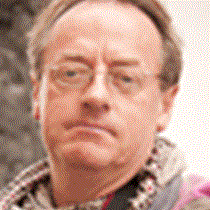Kirkwall & Shapinsay, Orkney Islands, Scotland
Mainland Orkney is a veritable treasure trove of archaeological field monuments. This morning we sampled a number of them including the world famous Skara Brae. This site is the remains of a Neolithic village dated to around 3100 BC and was continuously occupied by members of an early farming community for almost six hundred years. This ancient Stone Age village, which is one of five in the area, was first exposed by the erosive power of a violent storm in 1850 which tore off thick layers of sand which for millennia had acted as a cocoon protecting the structures and their contents from destruction. The site consists of the remnants of a number of drystone walled houses encased as it were in an extensive shell midden. The internal features of one of the typical houses included stone box-like beds, a central hearth and a 'dresser', the latter positioned against the wall directly opposite the low entrance into the house. It is interesting to note that in the traditional cottages of more recent times in the area the piece of furniture which took a place of pride in the household was a tall wooden dresser. Displaying the prized possessions of the woman of the house, including the shiny china teapot, cups and saucers, the tall wooden dresser was placed in the same position. Aptly enough everything is made from the local flagstone. We also explored the excellent small museum housed in the visitor center which displays a wide selection of actual artifacts found during excavations on the site.
Other highlights were visiting the impressive Bronze Age stone circle of Brogar and the Neolithic chambered tomb of Maes Howe. The function of the stone circle is unknown but it certainly held an important position within the psyche of the Bronze Age folk who must have expended massive resources in its construction. The megalithic tomb of Maes Howe is a solid testament to the incredible organizational and architectural skills of these early people; arriving in this area sometime in the fourth millennium BC, they were the first to introduce farming and a more sedentary way of life.
During lunch the ship made its way across to Shapinsay Island where we spent a wonderful afternoon exploring Victorian Balfour Castle and its attractive sunken gardens and woodland walks. A group of guests made their way to a bird hide in the company of our naturalists. To cap it all off we enjoyed a delightful afternoon tea and sampled homemade scones with rhubarb jam and shortbread biscuits.
Mainland Orkney is a veritable treasure trove of archaeological field monuments. This morning we sampled a number of them including the world famous Skara Brae. This site is the remains of a Neolithic village dated to around 3100 BC and was continuously occupied by members of an early farming community for almost six hundred years. This ancient Stone Age village, which is one of five in the area, was first exposed by the erosive power of a violent storm in 1850 which tore off thick layers of sand which for millennia had acted as a cocoon protecting the structures and their contents from destruction. The site consists of the remnants of a number of drystone walled houses encased as it were in an extensive shell midden. The internal features of one of the typical houses included stone box-like beds, a central hearth and a 'dresser', the latter positioned against the wall directly opposite the low entrance into the house. It is interesting to note that in the traditional cottages of more recent times in the area the piece of furniture which took a place of pride in the household was a tall wooden dresser. Displaying the prized possessions of the woman of the house, including the shiny china teapot, cups and saucers, the tall wooden dresser was placed in the same position. Aptly enough everything is made from the local flagstone. We also explored the excellent small museum housed in the visitor center which displays a wide selection of actual artifacts found during excavations on the site.
Other highlights were visiting the impressive Bronze Age stone circle of Brogar and the Neolithic chambered tomb of Maes Howe. The function of the stone circle is unknown but it certainly held an important position within the psyche of the Bronze Age folk who must have expended massive resources in its construction. The megalithic tomb of Maes Howe is a solid testament to the incredible organizational and architectural skills of these early people; arriving in this area sometime in the fourth millennium BC, they were the first to introduce farming and a more sedentary way of life.
During lunch the ship made its way across to Shapinsay Island where we spent a wonderful afternoon exploring Victorian Balfour Castle and its attractive sunken gardens and woodland walks. A group of guests made their way to a bird hide in the company of our naturalists. To cap it all off we enjoyed a delightful afternoon tea and sampled homemade scones with rhubarb jam and shortbread biscuits.




